- English
- Deutsch
- Français
- Home
- O Twojej drukarce
- Funkcje drukarki
- PP steel sheet
PP steel sheet
- Opis drukarki
- Funkcje drukarki
- Akcelerometr (MK4/S, MK3.9/S)
- Regulacja jasności (SL1)
- G-code specyficzne dla firmware Buddy
- Cancel Object - anulowanie drukowania obiektu (MK4, MK3.9, XL, MINI/+)
- Wykrywanie zderzeń
- Zrzut błędów
- Tworzenie modelu do kalibracji żywicy (SL1/SL1S)
- Zrzut błędów (MK3/S/+ i MK2.5/S)
- Menu eksperymentalne (MK3/S/+)
- Ustawienia eksperymentalne (MK4/S, MK3.9/S, MK3.5/S, XL, MINI/+)
- Czujnik filamentu (MK4, MK3.9, XL)
- Czujnik filamentu w MK3 (bez S)
- Flashing custom firmware (MK4/S, MK3.9/S, MK3.5/S)
- Giętkie płyty stołu ze stali sprężynowej (zalecenia)
- Moduł GPIO
- Głowica drukująca typu high-flow (HT90)
- Głowica drukująca typu high-temp (HT90)
- Ustawienia HW (MINI/MINI+)
- Ustawienia HW (MK2.5/S & MK3/S/+)
- Podłączenie do Internetu (SL1/SL1S)
- Czujnik filamentu IR (MK2.5S, MK3S/+, MK3.5/S)
- Wykrywanie czujnika filamentu IR (MK3S)
- Regulacja jasności wyświetlacza (MK3S)
- Regulacja kontrastu ekranu LCD (i3)
- Czujnik tensometryczny (MK4/S, MK3.9, XL)
- Struktura menu (SL1/SL1S)
- MMU3 - standardowa dysza Prusa Nozzle vs. CHT
- Podgląd modelu
- Network Connection (MK4S, MK3.9S)
- Silikonowa skarpeta Nextrudera (XL, MK4, MK3.9)
- NFC antenna
- Hałaśliwy czujnik filamentu (MINI)
- Drukowanie jednym kliknięciem
- Wlewanie żywicy i rozpoczynanie druku
- Power Panic
- Tryby pracy
- PP steel sheet
- Main attributes
- Considerations
- Maintenance
- Filaments
- Prints don’t stick
- Notes
- Profil drukowania (SL1/SL1S)
- Statystyki druku
- Statystyki i informacje o drukarce (SL1/SL1S)
- Pronterface i przewód USB
- Kody G unikalne dla firmware Prusy
- Prusa Pro Filament Drybox
- Kalibracja żywicy (SL1/SL1S)
- Czyszczenie zbiornika (SL1/SL1S)
- Satynowa płyta ze stali sprężynowej
- Sortowanie plików na karcie SD
- Gładka płyta ze stali sprężynowej
- Tryby dźwięku (MINI/MINI+)
- Specjalna stalowa płyta stołu PA Nylon
- SpoolJoin (MMU2S)
- Profile płyt stalowych
- Wykrywanie zablokowanego filamentu #26101 (MK4S) #13101 (MK4) #21101 (MK3.9) #17108 (XL)
- Menu Wsparcie (MK3/S/+)
- Ustawienia podpór w XL
- Teksturowana płyta ze stali sprężynowej
- Kalibracja modelu termicznego
- Mapowanie narzędzi (XL)
- Mapowanie narzędzi i mapowanie filamentów (XL, MMU3)
- Powiadomienia na górnym pasku (SL1/SL1S)
- Ekran dotykowy (MK4, MK3.9, MK3.5, XL)
- Menu Parametry (Strojenie)
- Materiały rozpuszczalne w wodzie (PVA/BVOH)
- Informacje ogólne
The Original Prusa magnetic heatbed is designed to hold a removable double-sided flexible spring-steel sheet, designed specifically for easy removal of printed objects from the print surface.
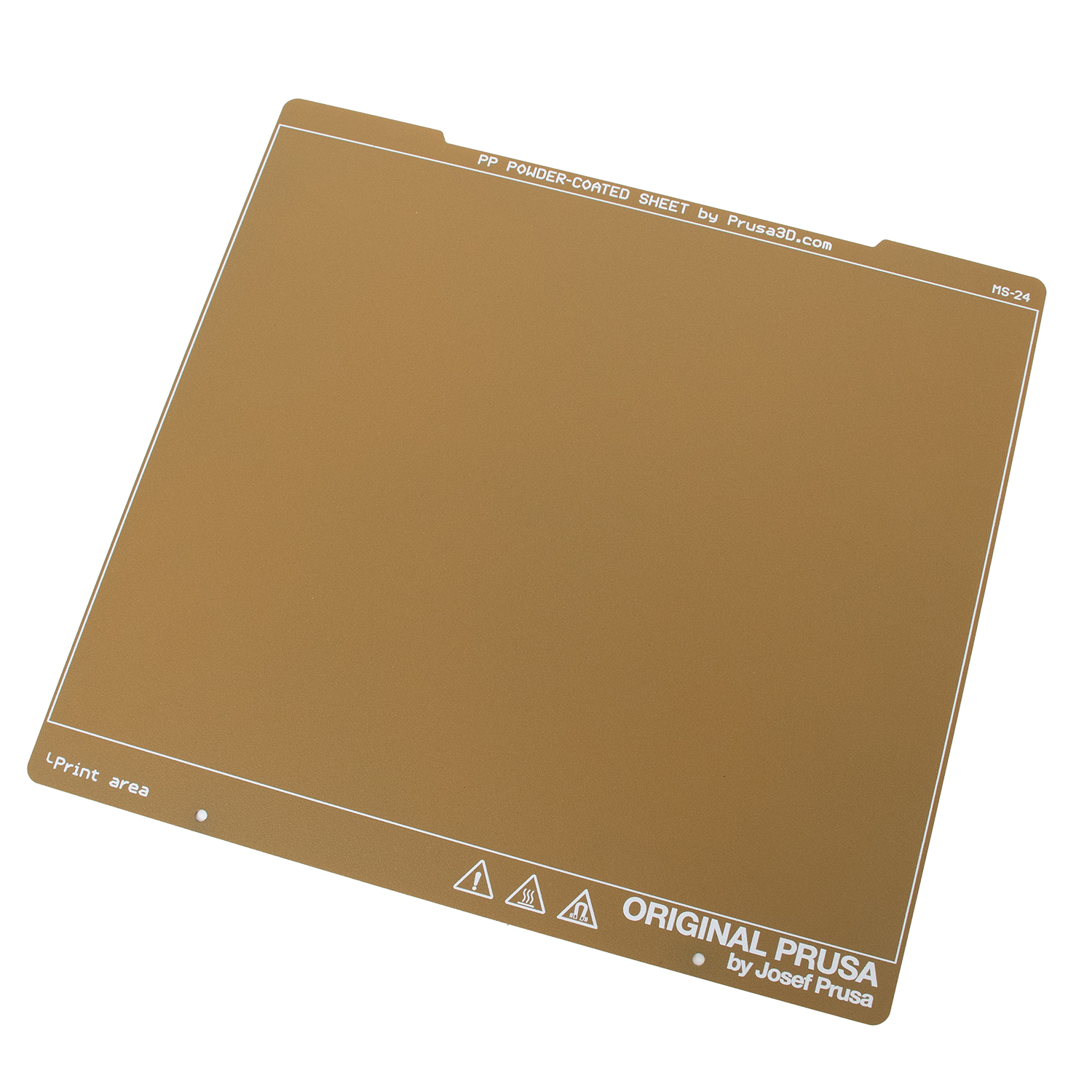 | 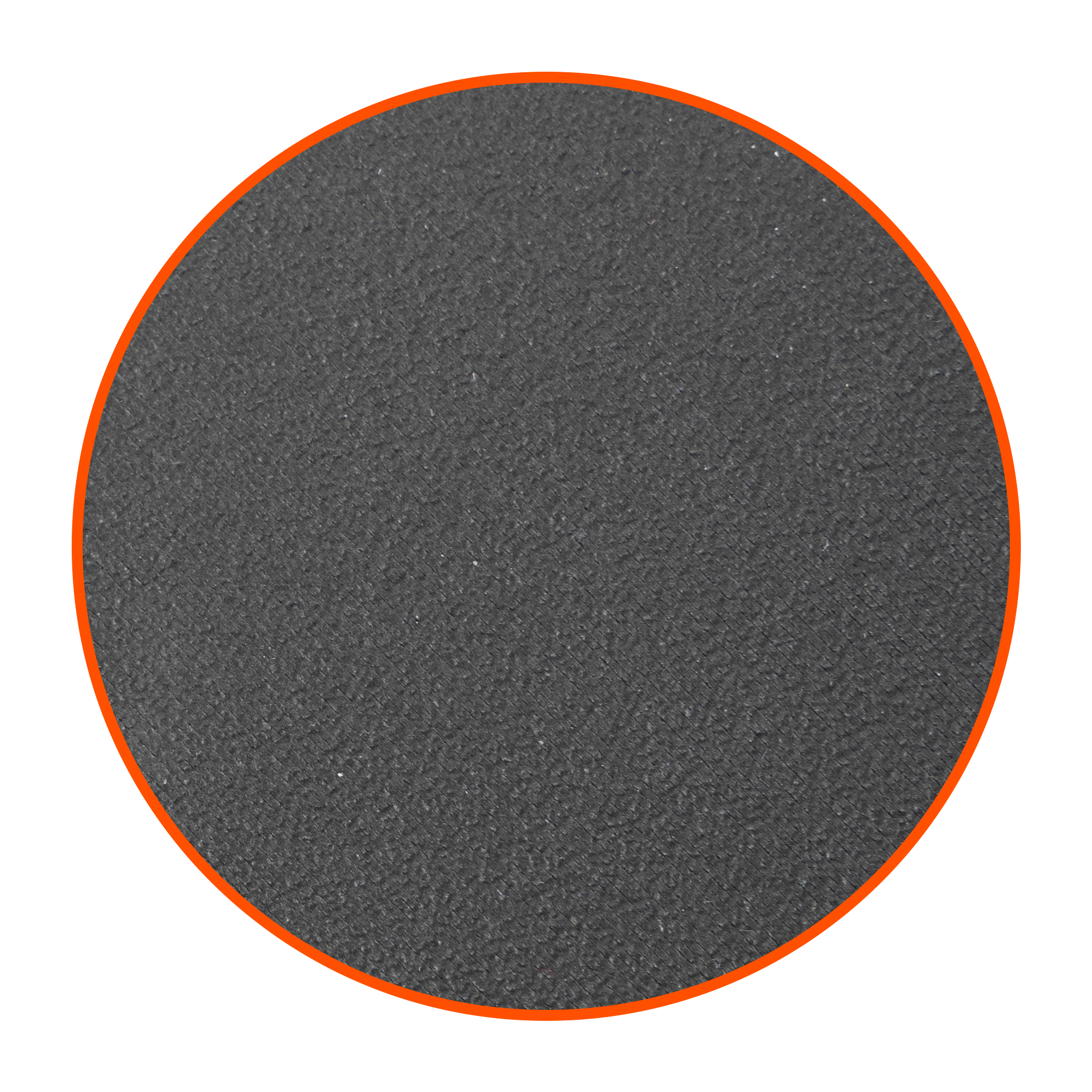 |
| PP steel sheet | The underside of a printed object |
The PP sheet is made for printing polypropylene (PP) since its adhesion to standard PEI sheets is generally very poor. The sheet comes with a matt texture, similar to the satin steel sheet with a PEI surface. The sheet is compatible with most polypropylenes, PLA, PETG and TPU, other materials may have insufficient adhesion and should be printed on our standard PEI sheets.
Main attributes
- Compatible with many types of polypropylene
- Made for printing without using a glue stick, PP tape and other means of increasing adhesion
- Slightly textured surface
- Double-sided! Both sides can be used repeatedly
- Easy maintenance and good adhesion qualities
Considerations
- Never clean the PP sheet with acetone! This will damage the surface.
- For good adhesion properties and easy print removal, clean the print surface with IPA before every printing, just as described in 3D printing handbook.
- Check the proper first layer height! If the Live Z value is too low and the first layer is too squeezed, print removal may be difficult and may damage the sheet.
- Some types of polypropylene may be prone to warping and require using brim or are suitable only for printing small parts and models with sparse infill.
- Keep the sheet as clean as possible! Any grease stain will decrease adhesion.
- Live Z value needs to be readjusted if you switch sheets. See Profile płyt stalowych.
- Not scratch-resistant!!! Do not use metal spatulas with sharp edges to remove the prints. Be extremely careful when removing the print.
- Printing with Brim is recommended.
Maintenance
- Attracts fingerprints - A good indication of where your sheet is dirty/greasy and that you need to clean it.
- Clean with ~90% IPA when the sheet is cold. If ~90% IPA is not sufficient, clean with dishwasher soap. Do not leave the sheet wet! It has an anti-corrosion layer but is still not recommended.
- Never clean with acetone! It might cause damage to the sheet.
- Some types of paper towels may leave traces on the sheet (fiber pieces).
Filaments
We have done a lot of testing and compiled our results for you to use. To easily see how to prepare your sheet for any filament type, please see our Material table.
Prints don’t stick
If your print surface is perfectly clean and all grease has been removed by wiping it with a paper towel soaked in isopropyl alcohol ~90% and if the first layer height is set up perfectly, yet your print still does not adhere reliably to the print surface, check out Problemy pierwszej warstwy.
Keep in mind that polypropylenes in general tend to warp more than other materials. Sometimes warping may be so strong that larger models (or with dense infill) detach from the surface even over the best surface adhesion. If you experience such strong warping, we recommend using another type of PP for selected print - for example, our Prusament PP Carbon Fiber shows almost no warping at all. You can find more in the articles about polypropylene and warping.
Notes
After removing the 3D-printed object, you may notice a visible imprint on the sheet’s surface. This is only a visual change: it doesn’t leave any marks on the next 3D-printed parts and does not affect the printing properties in any way. Therefore it’s not considered a reason for a warranty claim.
As a result of the temperatures to which the sheet is exposed during printing, some parts on the bottom surface, which is in direct contact with heatbed, may become slightly glossier or with a different shade. This visual change does not adversely affect the printing properties and is also not considered a reason for a warranty claim.
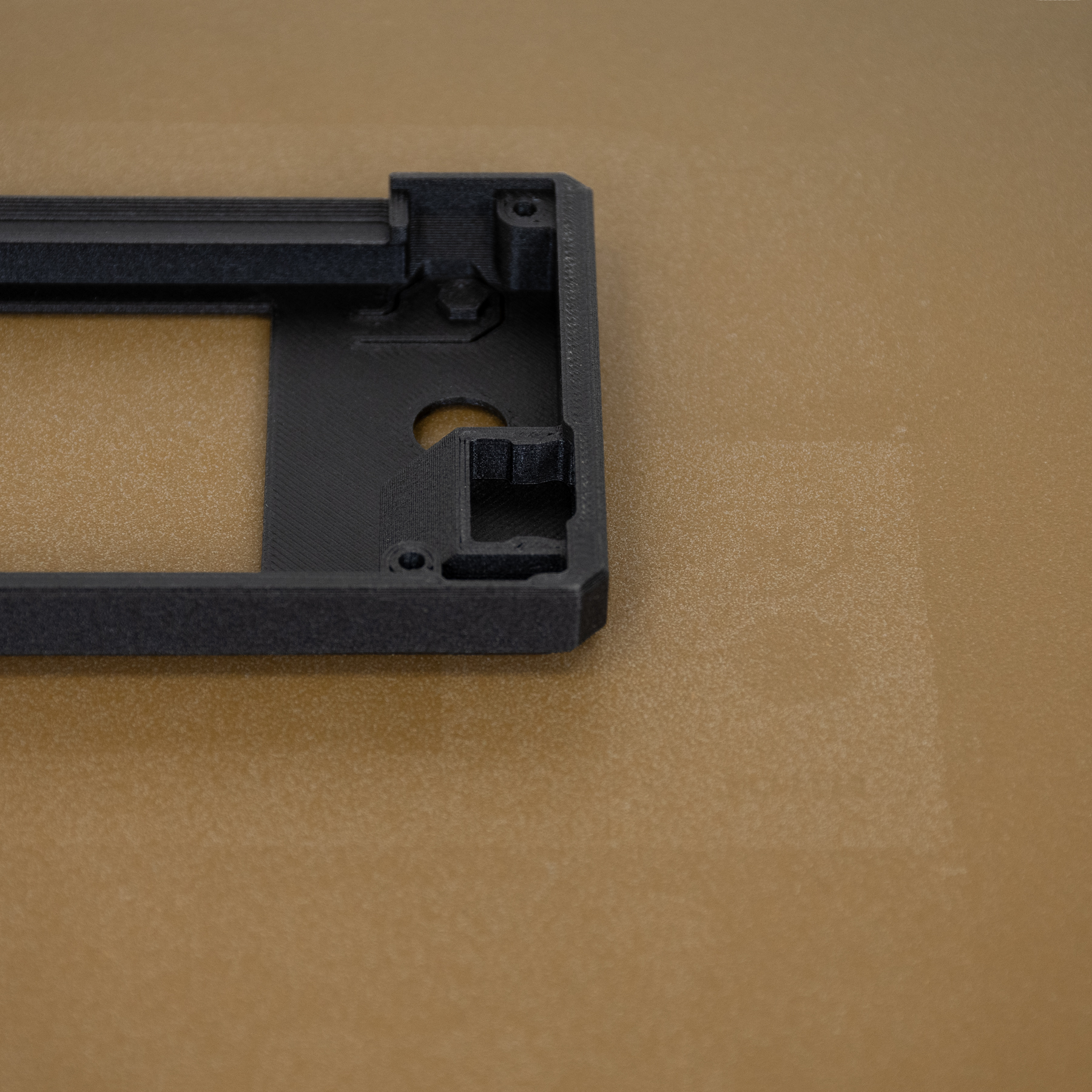 | 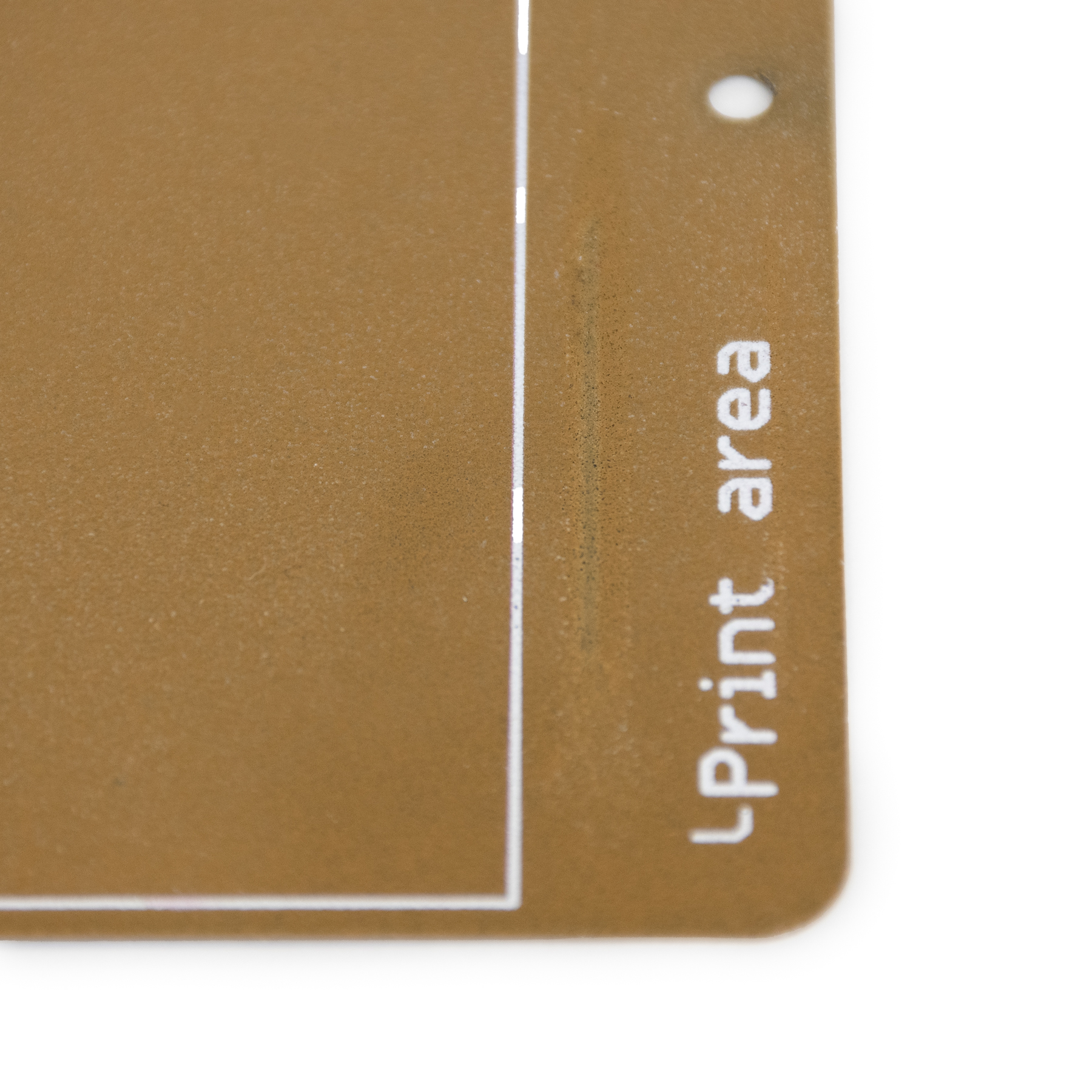 | 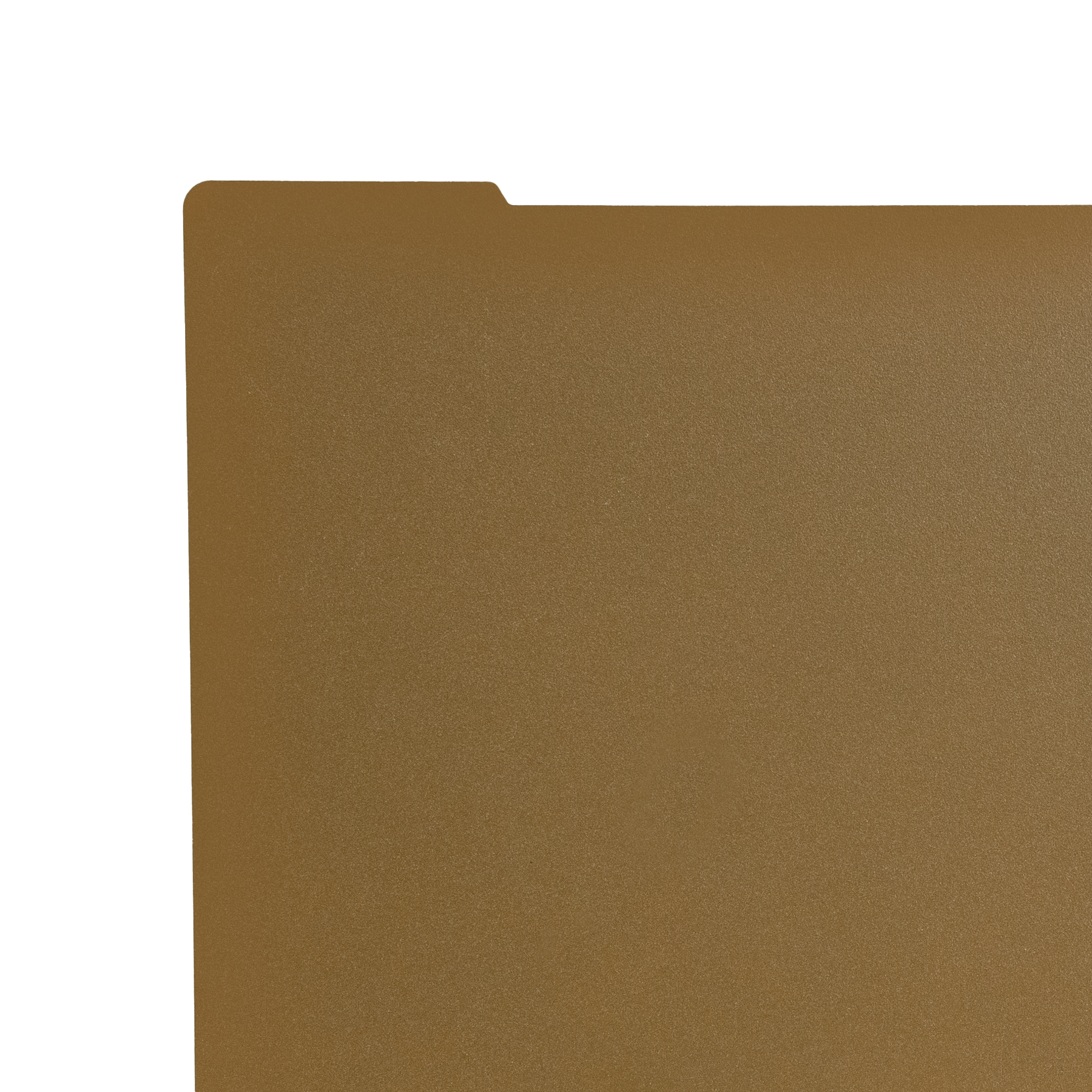 |
| Example of visible imprint | Imprinted purge line | Shade change caused by heatbed |
Komentarze
Wciąż masz pytania?
Jeśli masz pytanie dotyczące czegoś, czego nie opisaliśmy, to sprawdź dodatkowe zasoby.
A jeśli to nie działa, możesz wysłać zgłoszenie na [email protected] lub klikając poniższy przycisk.